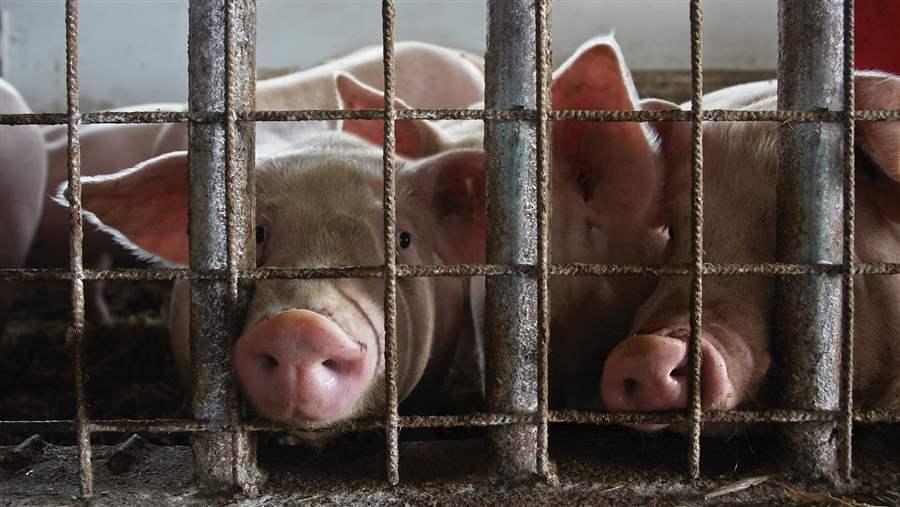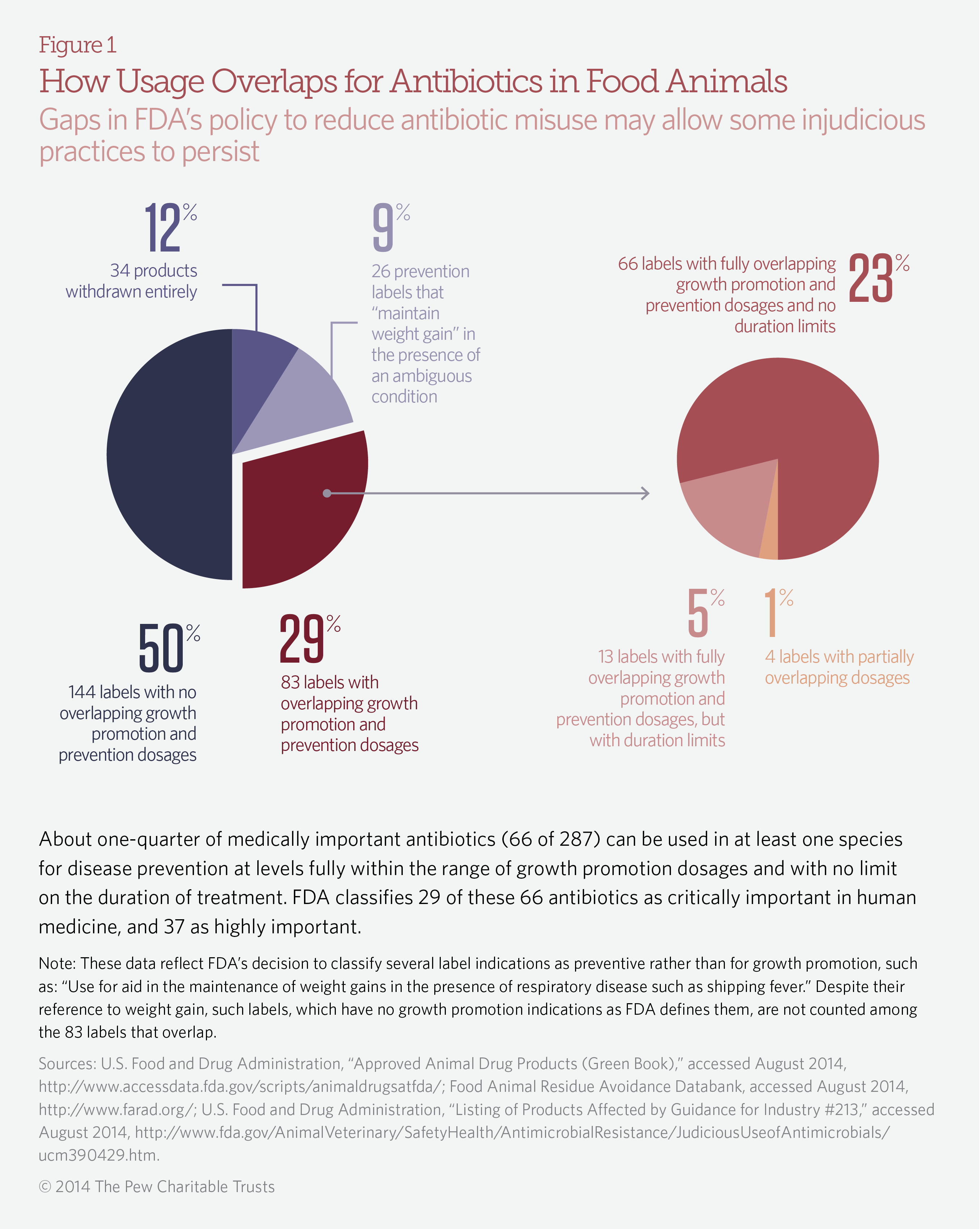Gaps in FDA's Antibiotics Policy
Many drugs may still be available for food animals at growth-promotion levels
 iStock
iStockGaps in FDA's Guidance #213 may let injudicious antibiotics practices persist.
In December 2013, the U.S. Food and Drug Administration took steps to eliminate the use of antibiotics in food animals for growth promotion. It asked drug companies to do two things: remove indications for “feed efficiency” and “weight gain” from the labels of their antibiotic products and require veterinarians to oversee any addition of these drugs to feed and water. FDA’s new policy, known as Guidance for Industry #213, is intended to reduce antibiotic misuse, which contributes to the spread of antibiotic-resistant bacteria. Gaps in FDA’s policy, however, may allow some injudicious practices to persist.
The Pew Charitable Trusts reviewed the labels of all 287 antibiotic products identified as being affected by Guidance #213 and looked for instances in which there was overlap between dosages approved for growth promotion and disease prevention. (See the full methodology below.)
Findings and analysis
Many antibiotics approved for disease prevention purposes were also approved for growth promotion. (See Figure 1.) In fact, about a quarter of the drugs (66 of 287) can be used in at least one species of livestock (chickens, turkeys, pigs, or cattle) for disease prevention at levels that are fully within the range of growth promotion dosages and with no limit on the duration of treatment. FDA classifies 29 of these 66 antibiotics as critically important in human medicine, and 37 as highly important.
The lines between disease prevention and growth promotion are not always clear. For example, 26 drugs approved for disease prevention are labeled to include “maintain[ing] weight gain” in the presence of vague illnesses, such as “respiratory disease.” FDA does not consider this use to be for growth promotion despite the reference to weight gain. As a result, Guidance #213 allows drugmakers to continue using this ambiguous language on their products’ labels.

“Even if Guidance #213 is fully implemented, we are concerned that dozens of products could still be added to animal feed or water throughout the animals’ lives in the absence of any threat from a specific bacterial disease,” said Dr. Gail Hansen, a veterinarian and senior officer with The Pew Charitable Trusts’ human health and industrial farming project. “FDA’s policy is an important step, but there is more work to do, both to effectively eliminate growth promotion and to ensure that antibiotics are prescribed by veterinarians to prevent disease only under well-defined circumstances.”
FDA does provide criteria in Guidance #213 that veterinarians can follow when distinguishing between appropriate and inappropriate disease prevention uses. For example, the policy suggests that veterinarians look for evidence that preventive uses are effective and can target specific disease-causing bacteria—an important step, because FDA approved many of these drugs decades ago, and there has been minimal or no published evidence since then that the levels given for preventive use actually keep animals from developing bacterial infections.
Recommendations
Pew urges FDA to take additional steps to ensure that food animals receive antibiotics only when medically necessary. Specifically, the agency should:
- Provide a detailed plan and timeline for monitoring and publicly reporting total antibiotic use in food animals, including estimates of use by species and by purpose (growth promotion, disease prevention, disease control, and disease treatment).
- Establish a clear target for reduction of total antibiotic use in food animals.
- Outline a process and timeline for reviewing the adequacy of disease prevention label claims to ensure that they effectively prevent bacterial infection and are not used any longer than necessary.
Methodology
According to FDA, Guidance #213 would affect the labels of 287 antibiotic products. In Pew’s analysis, a label was counted as having partially overlapping approvals when growth promotion and prevention dosages partly matched (for example, one chlortetracycline product is indicated for growth promotion in swine at 10 to 50 grams per ton of feed and is indicated for disease prevention at 50 to 100 grams per ton of feed). Labels were counted as having fully overlapping approvals if the prevention dosage range occurred completely within the growth promotion dosage range (for example, if the product is approved to promote growth and prevent disease in cattle at 70 milligrams per head per day).






